There is more to porridge than a simple breakfast cereal dish. Sadza, generally described in English as a stiff meal porridge, is the highlight of traditional Zimbabwean cuisine. Almost any Zimbabwean can make this dish. Growing up, I wasn’t aware of much variety in the manner sadza was cooked. In more recent times, however, I have come across some very interesting recipes, pizza even. Asked to describe it, I would say it’s starchy, bland, and takes some getting used to. While sadza refers to thick porridge, a thin porridge is generally referred to as bota.
Ranging from thin to stiff, there are many sorts of meal porridge. Those below are some of them, with others being identified by more than one name. For this article, I worked mostly with dictionary definitions. Hopefully, at some point, I will get to experience these ‘porridges.’
1. Sadza
This is the general name for stiff porridge prepared from any type of meal; millet, sorghum or maize. Because it is a staple, the word is also used generally to refer to food.
2. Bota
This is the general name for thin porridge prepared from any type of meal; millet, sorghum or maize.
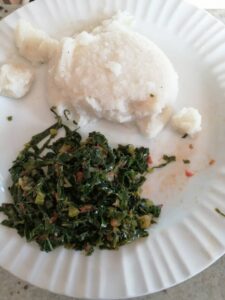
3. Bombera
There is a Shona proverb which says, ‘Chitanduro ndimai, mugoti unopihwa anyerere.’ This can be translated as ‘A mother is discerning, she gives the cooking stick to the quiet one.’ Children are interested in the cooking stick so they can lick off the thin porridge (bombera) on the stick.
4. Munya/ Muradzwa/ Nzvinyu
Like with any other dish, sadza leftover from supper can be enjoyed the next day.
5. Muswedzwa
Sometimes sadza is leftover from a previous meal, and enjoyed later in the day. This name is also used for leftover food in general.
6. Mutangara
This is sadza made from grain screenings mixed with groundnut butter with salt.
7. Jenachena
This is sadza made from freshly harvested millet. The millet is known as mhunga.
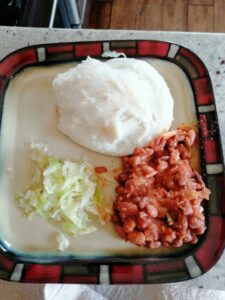
8. Mudzamba/ Munamba
These names are used to refer to porridge made using milk as the liquid. It could be thin porridge made with either ordinary milk, or the first milk secreted by a cow that has calved (beestings). It also refers to sadza made from finger millet meal, with beestings as the liquid base.
9. Mbisambisani
This is thin porridge made from freshly harvested mhunga.
10. Mutanda/ Mutandabota
This is thin porridge made with the juice of matamba (monkey oranges).
11. Mutuhwi
The water in which mealie rice (munhuchu) has been soaked is known as mutuhwi, and so is the thin porridge made using this liquid.
12. Usvusvu
This is a very thin porridge.
13. Mapwata
This is sadza in the early stages of preparation when it is starting to thicken. It is then left to cook as a thin porridge, boiling and sputtering.
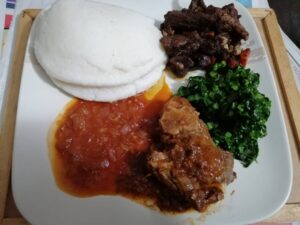
14. Gukumatsatse
This is sadza prepared from a mixture of mealie-meal and millet-meal.
15. Nzuwu
Sadza is always served with a side dish, otherwise, it is unpalatable. Nzuwu is the name for sadza that remains on the plate without any more relish to eat it with.
16. Chikwinin’wini
This is sadza in which too much meal has been added in the final stage of cooking. Others refer to it as chidhinha (brick). The ideal consistency of sadza is not too thick.
17. Magada/ Maheu
Maheu is a common traditional drink. Leftover sadza is mixed with water and sometimes malt, then whisked to the consistency of thin porridge and left to stand overnight to become a drink. Commercially packaged versions of the drink have become popular over the last decade or so.

18. Chigwaku/ Mugwaku/ Rugwaku
This is a wooden spoon used for serving sadza, and also refers to a spoonful of sadza.
19. Tsinya
This is a dry piece of sadza.
20. Mahwangu
This is the first porridge cooked in a new pot (earthenware). The porridge is made as a way to rid the pot of that newness which could ruin the taste of food.
21. Chinamu
This is the last bit of sadza on a plate. It can also mean special thin porridge for a child, cooked and served when required.
22. Chitunha
This is the last small spoonful from a pot of sadza, placed on the top of a serving of sadza. The word chitunha, however, is commonly used to refer to a corpse.

23. Mukadziusaende
This is part of a serving of sadza deliberately left by a husband for the wife (or by a brother for his brother).
24. Chimutsa/ Kamutsa/ Kamutsanedako/ Chimukaufurenegonzo
This is a small amount of sadza, or any other food, cooked early in the morning for a husband, especially one nursing a hang-over.
25. Chibvuwere
This is a small amount of sadza specially prepared for one person. It also refers to additional sadza, that is cooked in a pot from which sadza has just been cooked. The pot is emptied and reused before it has been washed, and while still hot.
26. Muputyu
This is intended to be a substitute for bread when drinking tea. The meal mixture is flavoured with sugar and oil then baked.
27. Dabwadabwa
This is sadza poorly cooked because the fire was not hot enough in the early stage of preparation. This results in undercooking. A morsel of sadza will not hold together when moulded, and the sadza spreads over the palm.
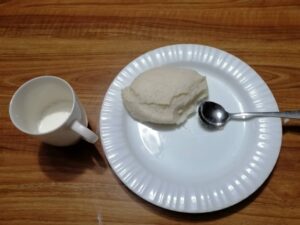
28. Bure/ Nhote/ Nhoto
This is sadza unsatisfactorily cooked because of insufficient heat in the final stage of cooking. This results in undercooking. A morsel of sadza will not hold together when moulded, and the sadza spreads over the palm.
29. Mbodza/ Pfanha/ Nhototo/ Mbwezhu
This is thin porridge or sadza that has been unsatisfactorily cooked.
30. Mushate/ Nonono
This is thin porridge cooked or served without sugar or salt.
31. Musuva
This is a morsel of sadza. Sadza is served accompanied with relish, and generally, each morsel is dipped into relish before eating.
32. Hambazi
This is thin porridge which is thicker than bota.

33. Hwada
Sadza is served such that spoonfuls appear as different portion on the plate. Hwada is a portion or spoonful of sadza.
34. Mbweredede/ Mbweredhedhe
This is watery sadza. These words are also used generally to refer to anything of a watery consistency.
35. Tsima/ Mukonde/ Gonde
This is a large portion of sadza heaped on a plate.
.
I am sure there is a lot more to add to this predominantly sadza list. Feel free to leave a comment with additions, or pointing out any inconsistencies.
References:
1. Hannan, Standard Shona Dictionary
2. Chimhundu, Duramazwi Guru ReChiShona

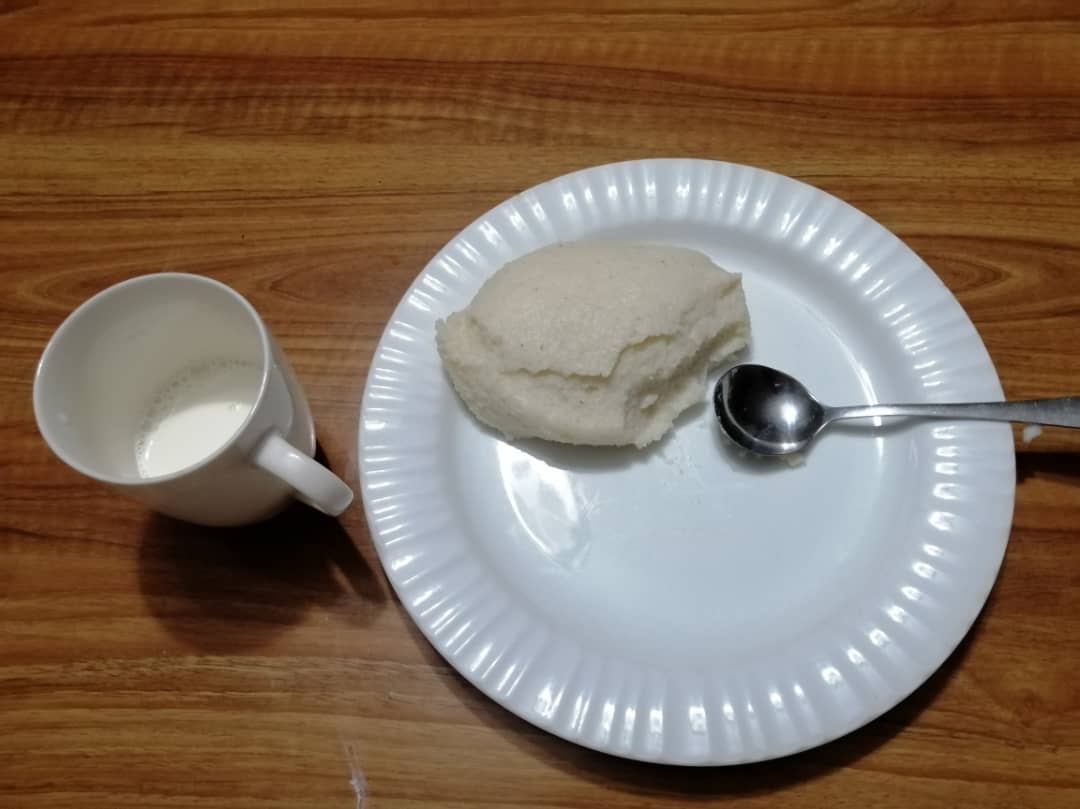
Interesting indeed, real food for thought, Shona sounds like a recently made up language of people with different cultures trying to make a new / improve a language in a community in order to understand each other.
Thanks Angie for stopping by.
Your comment reminds me of another post I wrote, 63 Shona words you didn’t know were borrowed from Afrikaans
Languages evolve, and Shona sure has!
Wow, really eye opening. This is really sparking my interest in our culture. Wagona mwana waMai
Thank you Enos for the positive feedback, and for stopping by!